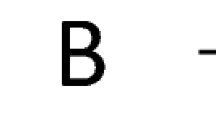Abstract
Theories employed to explain regularities in social behavior often contain reference (explicit or implicit) to the presence of nonlinear and/or nonadditive (i.e., multiplicative) relationships among germane variables. While such nonadditive features are theoretically important, the inclusion of quadratic or multiplicative terms in structural equations to model such features can cause significant methodological problems. This paper estimates a set of equations and formally examines how the inclusion of quadratic terms and multiplicative interaction terms contribute to the level of collinearity or ill-conditioning of the input data matrix and the precision of the parameter estimates. Subsequently we examine how effects of explanatory variables in nonadditive models can be measured and tested for statistical significance. The results indicate that collinearity may not be as big a problem for linear structural social science models as is often believed. Further, although collinearity is increased by adding quadratic and/or multiplicative terms, the effects of the collinearity tend to be localized and entail only variables with a common base. The findings suggest the substantive insight gained from including theoretically appropriate nonlinear and nonadditive terms outweigh the methodological problems they create.
Similar content being viewed by others
References
Adamchak, Donald J. & James L. Robinson (1986). “Evidence of a curvalinear relationship between income and infant mortality: individual data do not bear out ecological correlations”, Sociology and Social Research 70 (3): 214–216.
Ahern, Mary C. (1979). Health Care in Rural America. Washington D.C.: U.S. Department of Agriculture, Agriculture Information Bulletin No. 428.
Belsley, David A. (1982). “Assessing the presence of harmful collinearity and other forms of weak data through a test for signal-to-noise”, Journal of Econometrics 20: 211–253.
Belsley, David A., Edwin Kuh & Roy E. Welsch (1980). Regression Diagnostics: Identifying Influential Data and Sources of Collinearity. New York: John Wiley and Sons.
Blalock, Hubert M. (1965). “Theory building and the concept of interaction”, American Sociological Review 30: 374–381.
Dutton, D.B. (1984). “Socioeconomic status and children's health”, Medical Care 23(2): 142–156.
Puch, Victor R. (1974). Who Shall Live? New York: Basic Books, Inc.
Grossman, Michael (1973). The Correlation Between health and Schooling. Washington, D.C.: Conference on Research in Income and Wealth, Household Production and Consumption, National Bureau of Economic Research Report No. 22.
Hadley, Jack (1982). More Medical Care Better Health? An Economic Analysis of Mortality Rates. Washington, D.C.: The Urban Institute Press.
Judge, George G., W.E. Griffiths, R. Carter Hill, Helmut Lutkepohl & Tsoung-Chao Lee (1985). The Theory and Practice of Econometrics. New York: John Wiley and Sons.
Kitagawa, Evelyn M. & Philip M. Houser (1968). “Educational differentials in mortality by cause of death: United States 1960”, Demography 5(1): 318–353.
Mechanic, David (1968). Medical Sociology: A Selective View, New York: The Free Press.
SAS Institute Inc. (1985). SAS User's Guide: Statistics. Version 5 Edition. Cary, North Carolina: SAS Institute, Inc.
Southwood, Kenneth E. (1978). “Substantive theory and statistical interaction: five models”, American Journal of Sociology 83(5): 1154–1203.
Stokes, C. Shannon & Michael K. Miller (1985). “A methodological review of fifty years of research in rural sociology”, Rural Sociology 50(4): 539–560.
Walker, Henry A. & Cohen, Bernard P. (1985). “Scope statements: imperatives for evaluating theory”, American Sociological Review 50: 288–301.
Author information
Authors and Affiliations
Rights and permissions
About this article
Cite this article
Miller, M.K., Farmer, F.L. Substantive nonadditivity in social science research A note on induced collinearity and measurement and testing of effects. Qual Quant 22, 221–237 (1988). https://doi.org/10.1007/BF00183538
Issue Date:
DOI: https://doi.org/10.1007/BF00183538




